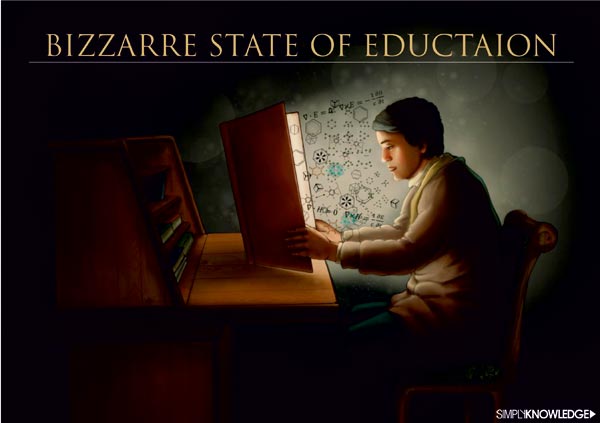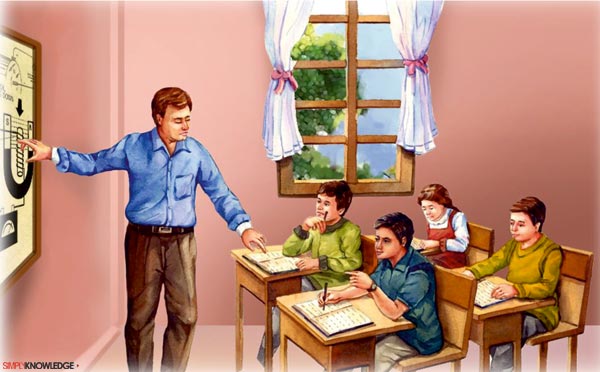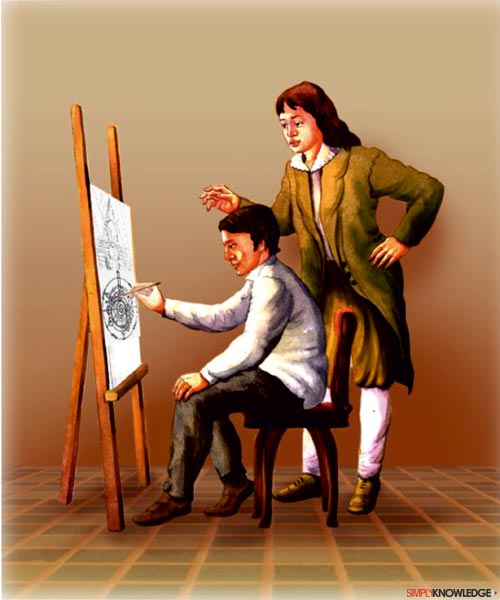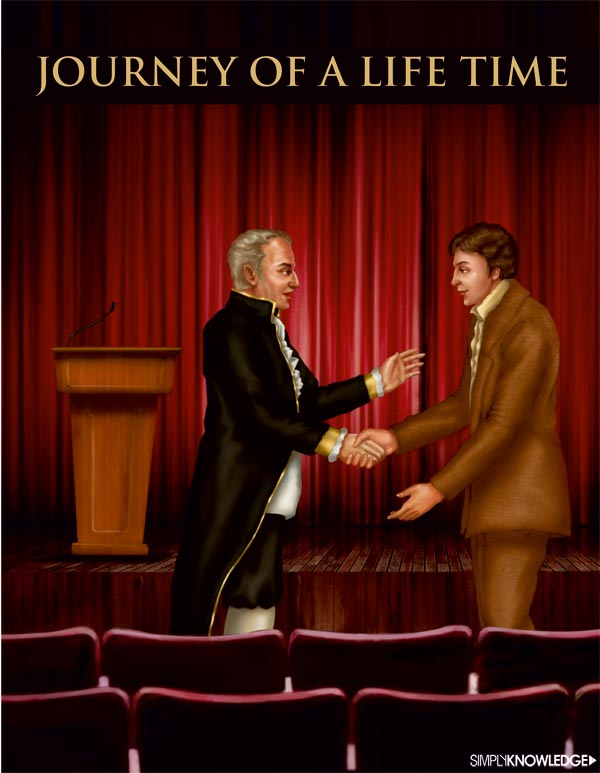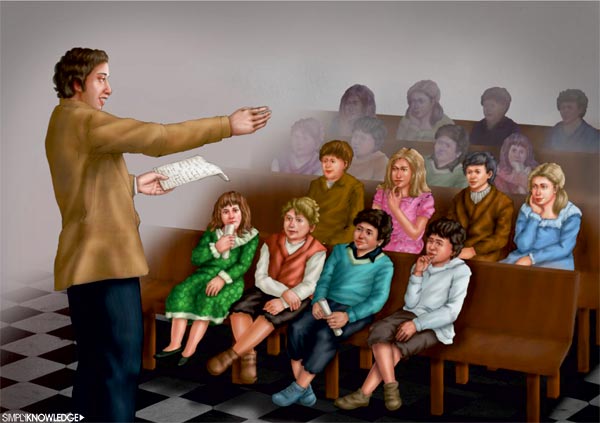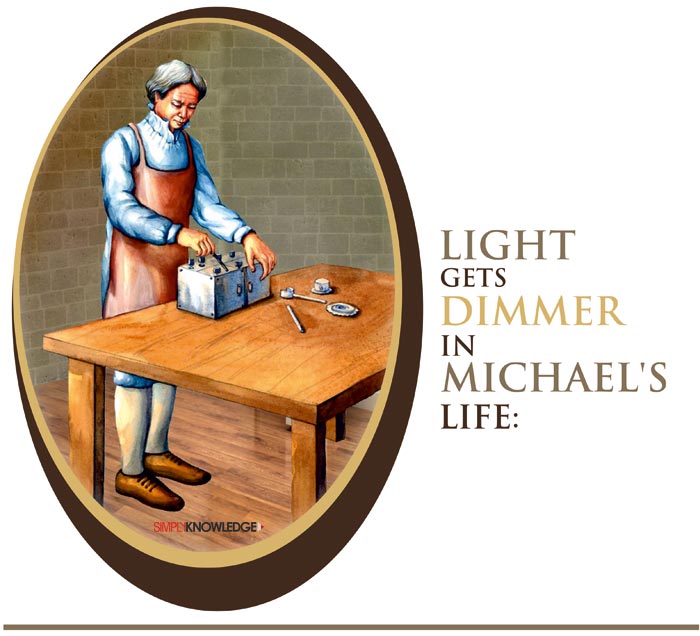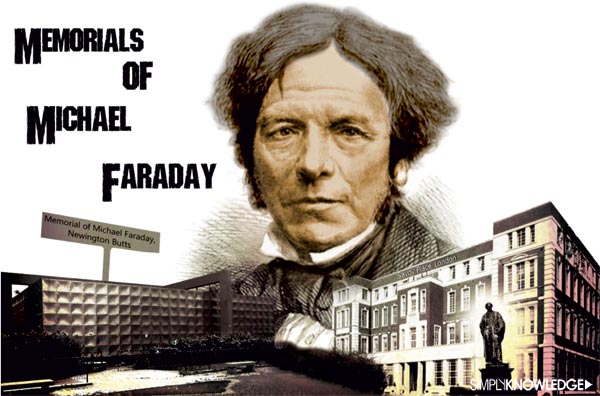


Introduction
Just imagine that you are watching the final of a cricket match on your television set and it has reached the climax, the situation where either we win or we lose. All of a sudden, there is a power failure in your area….what do you do? Without wasting any time you rush to switch on the generator and enjoy the match.
Or imagine this… you are expecting friends and relatives for lunch and you run out of cooking gas! Now what? Simple… you immediately use the handy induction based cooking system.
Going for an overnight trip to a remote village where there is no electricity? How do you capture the most beautiful moments of your life? What are the portable and instant means of communication today?
Yes, you guessed it absolutely right. Life without torches, cell phones, computers, laptops and digital cameras sounds ridiculous! All these devices need batteries some of which are throw-away and the most sophisticated version of batteries are the rechargeable batteries.
Life has been made so easy by these transformers, generators, induction, and other portable devices. The technologies implemented in these gadgets are based on the principle of electrochemistry, a branch of chemistry dealing with chemical reactions that involves electrical current.
No one can challenge the importance of electricity but none can overlook the discovery of electromagnetism and electrochemistry which bores the base of all modern gadgets as of today. The person responsible for this unique discovery is Michael Faraday, a British chemist and physicist who played a vital role in the study of electromagnetism and electrochemistry.
He led a life of simplicity and taught us one of the most useful lessons- ‘Service to Science’. Let us recollect the life of this illustrious man whose great discoveries formed the basis of electric power generation.

Birth And Family Background
James and Margaret Faraday were thrilled to hear the first cry of their baby boy, Michael Faraday on Thursday, 22nd September, 1791, in the village of Newington, Sussex, England. He was the third of the four children of James and Margaret after son Robert and a daughter named Elizabeth. When Michael was 5 years old, the family shifted to Jacob’s Wells Mews in West London where he spent his childhood. James Faraday was an ordinary blacksmith who toiled hard to suffice the needs of the family. Margaret Faraday was a home maker whose simple world revolved around her family and their needs.
The family diligently followed a particular sect called the Sandemanians, a type of Protestant Church which was split from the Church of Scotland. As a child, Michael suffered from speech impediment, but was quite inquisitive and had a questioning mind. He would happily play with his marbles and also babysit his younger sister. Once, Michael nearly lost his life while playing in the loft as he fell through an open space in the floor. The opening was right above his father’s anvil and fortunately his father was bending over his work at that very moment. Michael landed right on his father’s back and thus a major accident was averted.
Bizzarre State Of Eductaion
Michael was enrolled in an ordinary day school. There was nothing special in him that could attract attention of his teachers, but he still described himself as, “I was very imaginative person, and I could believe in the Arabian Nights as easily as in the Encyclopedia; but facts were important to me and saved me. I could trust a fact, and always cross-examined an assertion”.
As a child, Michael’s formal education was marked with a series of dramatic events which forced him to leave school. The educational policy followed those days was, “spare the whip, spoil the child.” This combined with speech impairment prevented young Michael from pronouncing his ‘R’ and that led to a major confrontation with his schoolmaster. One morning, the schoolmaster beat Michael so mercilessly that he could not move from the floor. Michael’s elder brother, Robert heard the commotion and rushed home to call their mother. When Mrs. Faraday reached school she was furious to find Michael still writhing in pain on the floor. That episode marked the end of Michael Faraday’s educational chapter.
By the time Michael turned 10 he overcame his speech flaw naturally and was no more speech impaired. James Faraday’s frail health and a family of five members forced Michael to work as an errand boy at a local bookseller, G. Riebau which was not far away from his home. He was only 11 years old and for his age, much sensible and a matured boy who believed in the doctrine of ‘Work is Worship’. He performed all kind of odd jobs and fulfilled multiple duties so sincerely that at the end of the year, the bookseller offered to take him as an apprentice to learn bookbinding without charging him a penny, which was needed for such kind of training. Michael’s father was impressed by the bookseller’s generosity as it made a huge difference to him financially.
When he turned 14, he became well versed with the art of book binding which later on helped him to manipulate scientific apparatus. As a young teenager, he would not spend his spare time loitering around with his friends but rather chose to read books belonging to his master, G.Riebau. Michael took advantage of his position and became an avid reader of books on science written by famous engineers like ‘Improvement of the Mind’ by Watts, articles on electricity, Lyons’s ‘Experiments on Electricity’, Boyle’s notes about ‘Producibleness of Chemical Principles’ and many more. Among these books, he came across a book titled, ‘Conversation on Chemistry’ written by Mrs. Marcet and that was his favourite book. It was this book in particular that inspired him into Science. He wanted to know whether Marcet’s statements were correct and so to quote in his own words, “I made such simple experiments in chemistry as could be defrayed in their expense by a few pence per week, and also constructed an electrical machine, first with a glass phial, and afterward with a real cylinder as well as other electrical apparatus of a corresponding kind.”

Inclination Towards Science
By the time Michael completed seven years as an apprentice, he was deeply in love with Science but since he lacked formal training he had no option but to stick to his book binding profession. One day while walking in the neighbourhood of Fleet Street, he came across flyers on a window of some shop announcing that lecturers would be delivered on natural philosophy by Mr. Tatum, a British scientist and philosopher, at 8.00 pm the same evening and the ticket price was quoted as one shilling. Michael yearned to hear the lectures and received permission from his master but there was a problem; from where to get one shilling? His elder brother Robert who had adopted his father’s profession as a blacksmith came to his rescue and gave him the needful money. Thus began the journey of Michael Faraday’s acquaintance with scientific lectures.
Tatum’s house resembled like school where he would frequently deliver lectures to aspiring students of philosophy. Michael too frequently visited Tatum’s house and befriended a young Quaker (name given to the religious group “The Religious Society of Friends”), Benjamin Abott who had received good formal education and worked as a clerk in a city house. Michael and Benjamin would chat for hours on philosophy and other topics. They were such close friends that they got together and invented an electrical machine in Michael’s kitchen and Michael delivered his first lecture from the end of the kitchen table.
Michael would carefully jot down the notes of Tatum and would then write down the details describing each and every experiment he saw and performed. He even made a four volume book of all his notes and dedicated the first volume to his master, G. Riebau. On the very first page of his first volume he thanked his master by writing a beautiful verse.
Mr. Riebau had a paying guest at his house, a foreigner name Masquerier who after the French revolution took refuge in London. He was a renowned artist and a painter who had painted a portrait of Napoleon. Masquerier was quite impressed by Michael’s intellectual capacity and not only offered him his books but also taught him drawing pertaining to scientific apparatus.

Entry Into The Royal Institution-London
Michael’s thirst for scientific knowledge increased to such an extent that he wrote a letter to Sir Humphry Davy, inventor of the electrical lamp and the president of the Royal Institution, asking him for any suitable employment opportunities in the institute. Michael had previously attended many public lectures delivered by Sir Humphry Davy, drafted notes and added drawings of the apparatus used in the experiments. In order to prove his scientific inclination, he sent his notebook to the president and was very confident that despite Sir Davy’s hectic schedule, he would surely respond to him. Michael’s hunch turned true when he received a letter from the great Sir Davy.
Sir Davy made an appointment for Michael to meet him at the Royal Institution. Like a true gentleman, he received Michael very politely. After a brief conversation, he cautioned Michael that science was not a money-making business, and that he could earn financially very well in the book binding business. But Michael’s mind was already set to become a scientist and Sir Davy could sense that the young lad had the zeal to do something in the scientific world. After a hard day at the Institution, Michael retired home for some sleep when a loud knock disturbed him. There was a message for him from Sir Davy, which made Michael take only forty winks as he waited patiently for the sun to rise the next morning.
Fate was favouring Michael as the former assistant from the Royal Institute was sacked on charges of misconduct and Sir Davy considered Michael a deserving candidate. He eventually offered him the post of an assistant in the laboratory of the Royal Institution. So, finally on 1st March, 1813, a 22 year old Michael Faraday was formally appointed as a Laboratory Assistant on remuneration of 25 shillings per week and an accommodation in the institute. This was a major phase in Michael’s life as he was now ready to dive in the vast ocean of scientific research and discoveries.
Michael’s Job Responsibilities:
Michael’s job responsibilities included assisting the lecturers and professors in preparing their notes and lectures. He was also assigned the task of installing and removing scientific apparatus as and when required. If any accidents took place during the experiments he was required to make a note of it and inform the manager for the necessary repairs. Once a week, he was asked to dust and clean all the models, instruments and apparatus. Furthermore, all the glass cases were required to be cleaned thoroughly at least once a month. Michael never felt ashamed of performing these menial jobs and worked hard to fulfill his responsibilities.
Michael enjoyed working with Sir Davy and would regularly assist him in conducting experiments. During those days Sir Davy was busy working on explosive chloride of nitrogen and in an experiment had even suffered serious injury to his eye. However, this did not deter him from conducting further experiments and he asked Michael to join him in the daunting task. Though the experimenters were supposed to wear a mask to save themselves from serious injuries it was not sufficient enough. In spite of all the dangers, young Michael was only too happy to be a part of it. Sir Davy was very impressed by Michael and was so heavily reliable on him that he decided to take him along on a six month tour of Europe.
Journey Of A Life Time
In the class based English society of that time, Michael was not given the status of a gentleman. When Sir Davy took Michael for the long journey, his valet decided not to accompany him. They reached Paris on 27th October, 1813. Michael was accompanying Sir Davy as his assistant and was asked by him to act his valet till a suitable replacement was found in Paris. However, Sir Davy failed to find a valet and Michael was asked to continue as a valet and his assistant. On the other hand, Sir Davy’s wife treated Michael like a servant and that made him feel so miserable that on an impulse he decided to leave the tour and return to England. But Michael knew, “No gain without pain” and continued with the journey.
The six month tour had now stretched to two years. During this time Sir Davy and Michael wandered about covering major cities like France, Italy, Switzerland and then on to Tyrol, Germany and Holland. Sir Davy would give public lectures and Michael would assist him. In this process, Michael gained the much required knowledge about science and also met famous scientists, including Ampere and Volta after whom amp and volt (the unit used for the apparent power in an electrical circuit) was later named. He was deeply influenced by their discoveries and found the entire journey very rewarding scientifically.
On their return to London in the year 1815, Michael was reappointed as an assistant in the Royal Institution. By this time, Michael had become increasingly involved in chemical analysis and had begun conducting experiments on steel and improvising steel alloys. He discovered a new type of glass which was clearer than the existing telescope lenses. Even while he was discovering something new, his main interest still lay in electricity.

Discovery Of Electromagnetism
In the year 1820, a Danish scientist, Hans Oersted, discovered that electric current flowing through an electric wire produces a magnetic field around the wire. Michael followed the principle and was convinced that the current could be manipulated to move a magnet around the wire or make the wire move around the magnet. Michael was quite excited about it and wrote to his close friend, Richard Phillips about his experiments. A few days later, he resumed his research on the relationship between electricity and magnetism and made a remark in his notebook, “This evening, I experimented with magnet, and for the first time, got the magnetic spark myself. Connected ends of a helix into two general ends, and then crossed the wires in such a way that a blow a b would open them a little. Then bringing a b against the poles of a magnet, the ends were disjoined and bright sparks resulted.”
The next day he repeated the experiment again and invited some of his friends to see the spark. One of his friend, Franklin hesitantly asked, “but what is the use of this little spark between the shaken wires? “What is the use of an infant?” Michael answered like an experimentalist, “Endeavour to make it useful”.
The discovery was termed as electromagnetic rotation and was the main concept in the development of electric motor. Michael published his discovery without giving due credit to his mentor Sir Davy and was caught in an ugly controversy. It is said that Sir Davy was jealous of Michael’s growing popularity. Sir Davy, who was then the president of the Royal Institution even tried to debar him from the society. As a result, Michael was forced to withdraw his research on electromagnetism for several years. However, his intellectual talents were later appreciated by the Royal Institution and he was admitted in the society as a member where he could openly exchange discoveries and research with other reputed scientists. After a few months, he was appointed as a Superintendent at the Royal Institution.

Holy Matrimony
Michael would diligently attend the mass at the Sandemanian Church in London and during one of his visits he met Mr. Barnard, a silversmith of Paternoster Row. He became a regular visitor at Mr. Barnard’s house and that is where the cupid’s arrow struck him. He fell in love with Mr. Barnard’s third daughter, Sarah, and expressed his love for her through a touching letter. Sarah was a bit hesitant and left for Margate where Michael followed her. Together they left for Shakespeare’s Cliff in Dover where they spent quality time in each other’s company. Michael was madly in love with her and desired to spend his life with her. After his return to London he hoped that Sarah would reciprocate her feelings for him and he was right. Finally, on 12th June, 1821, their marriage was solemnized at the Sandemanian Church. It was a simple wedding with not much of hustle and bustle, just like what Michael wanted. After marriage, Michael took his bride home at Albemarle Street but every weekend would be spent joyously at Mr. Bernard’s home. This routine was followed till Mr. Bernard’s death.
As years passed by, the affection between the couple grew deeper and deeper. During the same period, Michael lost his father and took up the responsibility to take care of his mother. Michael’s marriage to Sarah provided a lot of stability to his life and his domestic life was filled with happiness.

Period Of Self Contentment
After marriage, Michael began research on forces of nature in subjection to man. What followed after this were a series of lectures at the London Institute, then at Albemarle Street. In the year 1825, there was a change in the management and Michael was appointed as the Director of the Institute with greater responsibilities and perks. Although his marital life was blissful, he and Sarah were not blessed with a child. He soon decided to fill this void by adopting one of his little nieces. It’s not sure whose daughter she was or what her name actually was.
After a hard day’s work, he would go to his room and play games with the little one or sometimes even read stories to her. When other children from the neighbourhood visited them he would play hide and seek with them in a lecture theatre which was quite large. Michael would often take his niece to the zoological garden and enjoy the fun and frolic with other children. He would become a child himself and would laugh at the monkey’s tricks till tears rolled down his cheeks. Such was his craze for children that whenever he visited dinner parties, he would take along his niece even if she was in her nightgown.
Michael’s love for children prompted him to conduct public lectures for ‘Children’s home’ from school during Christmas vacations. This custom is carried on till date at the Royal Institution on each Christmas. Michael conducted these lectures himself and made it so interesting for the children that they simply adored him. He continued these juvenile lectures for nineteen years and was never tired or bored of it. His lectures on forces of nature earned him £100 per annum and caught the attention of John Fuller, a member of parliament. He founded a Professorship of Chemistry at the London University and gave Michael the first appointment of his life. With the endowment received, the Royal Institute became richer, and hence increased Michael’s emoluments too. By the end of 1830, Michael’s gains from the professional work increased to £1000 per annum.

Series Of Reserch And New Discoveries
After a gap of nearly ten years i.e. after the controversy with Sir Davy, Michael resumed his research in the field of electricity. In the year 1831, he discovered electromagnetic induction wherein he found that if he moved a magnet through a loop of wire, an electric current flowed in the wire. He also confirmed that the current flowed even when if the loop was moved over a stationary magnet. This was the first transformer which Michael used to demonstrate the concept of electromagnetic induction. He quoted, “I am busy now again on electro magnetism and think I have got hold of a good thing, but can’t say. It may be a weed instead of a fish that, after all my labor, I may at last pull up.” He was not very sure how his discovery would be eventually utilized. But his experiments did establish the theory that a changing magnetic field produces an electric field which was widely accepted as “Faraday’s Law of Induction”.
In simple words, when an electric current is turned on and off in one circuit, it causes a changing magnetic field which produces an electric current with a different voltage in the other circuit. As electricity is generated and transmitted at high voltage it has to be converted to lower voltage for domestic use, with the help of a transformer which is an indispensable part of the modern power supply network. Michael then used the principle to construct the first dynamo and generators.
In the subsequent year, i.e. in the year 1832, Michael discovered that potential difference is generated between the ends of an electrical conductor that moves perpendicular to a magnetic field. He also built the first electromagnetic generator called the ‘Faraday Disc’, a type of a generator, using a copper disc rotating between the poles of a horse shoe magnet. However, Faraday disc was found to be very inefficient in producing current and was never put in practical use. In the same year, Michael made a detailed study on combination of chemistry and electricity. He discovered that the quantity of elements separated by passing an electric current through dissolved salt was proportional to the quantity of current passed through the circuit. This discovery formed the basis for the first law of electrolysis and was responsible for the invention of equipments like electrolyte and the anode and cathode (parts of the battery used in torches, cell phones and digital cameras)
The income received from the professional work was sinking as Michael spent more time in discoveries and research instead of delivering and conducting lectures. By the end of 1832 it dipped as low as £155 and 9 shillings p.a. He however decided to pursue his interest in electricity. He gave up the professorship of Chemistry and in 1836 became a scientific advisor to the Trinity House on a remuneration amounting to £200 p.a.
In the year 1845, Michael discovered the phenomenon which he termed as Diamagnetism- a weak form of magnetism that is only prominent in the presence of an external magnetic field. In the same year he discovered what is termed today as ‘Faraday Effect’. It is a magnetic-optical phenomenon that is an interaction between light and magnetic field in a medium. He mentioned the phenomena in his notebook, “I have at last succeeded in illuminating a magnetic curve or line of force and in magnetism a ray of light.”The theory established that magnetic force and light were related.
Armed with his passion for science, the prince of experiments began working on static electricity. Michael discovered that if the charged conductor is charged, it will reside only in the exterior of the charged conductor and there will be no influence in the interior of the charged conductor. The effect is due to a shielding which is now known as ‘Faraday Cage’.
A more reliable and practical demonstration of Faraday Cage effect is proved when an aircraft is struck by lightning which is a common occurrence. However, it does not harm the plane or the passengers as the metal body of the aircraft protects the interior.
Michael’s Work Culture
Michael was a sincere worker and did not prefer to socialize or attend parties and gatherings. There are several episodes in his life which portray his method of working and his charismatic personality of being a thoughtful and true gentleman.
His no-nonsense attitude can be depicted in a small incident when he and one fellow scientist were asked to conduct an inquiry into the cause of a serious explosion in the Durham coal mine. While sitting in the mine interrogating the mine workers, he asked them “where do you stock your gunpowder?” They calmly replied that he was sitting on a bag of it. He gave them a piece of their mind for their carelessness.
According to Professor Schonbein of Basle, Michael had a unique and a systematic way of working. Michael would think much in advance about the subject on which he was working and chalked plans accordingly. He would then instruct his assistant, Anderson if any new piece of apparatus was required for the purpose. He would explain and draw the apparatus clearly for Anderson to understand so that there was no confusion. He would also provide a detailed list of whatever equipments he needed. Once the instruments were brought, he would first take a good look to check if they were correctly brought, wear an apron, rub his hands together and then begin his work. Similarly, after the completion of his work, he would place each tool back to its original place and only then leave the laboratory and discuss about the experiment with Anderson up in his room.
One particular incident which shows the gentle and kind nature of Michael was when one of his pupil who was appointed as the Director of the Chemical Department of the War Establishment at Woolwich was to deliver his first lecture. The pupil was naturally very nervous, which was noticed by Michael. He immediately put him to ease and shook hands with him warmly. He then offered his services as an assistant to his own former pupil which was a very kind gesture.
Another incident depicts Michael as clever and witty. A lady called up Michael’s wife complaining that a broken needle was stuck in her foot and she wasn’t very sure whether it had been completely extracted or not. “Oh!” said Michael, “I will soon tell you that”, and taking a finely suspended magnetic needle, he held close to her foot and it dipped to the concealed iron.

Impact Of His Lectures
Although Michael began lecturing by the age of 32, he became a regular lecturer only by the age of 36. His lectures and writings were so powerful that it left a positive impression on many and as a result he was bombarded with lots of appreciative mails. He once quoted, “The lecturer should give the audience full reason to believe that all his power has been exerted for their pleasure and instruction.” Amongst the letter received by Michael there were some from Napoleon, who was once upon a time imprisoned as Prince Louis Napoleon in fortress of Ham. He would regularly read Michael’s findings and acknowledged that the writings have brightened the hours of confinement. Another important fan mail was written by King Edward VII, when he was 15 years of age and the Prince of Wales. One of his lectures was attended by Queen Victoria and other members of the Royal Family. However, Michael never boasted about it and remained humble as usual. He also refused nomination for the prestigious post of President of the Royal Society in the year 1846.
He was very sincere and thoughtful about his audience. Once, Michael was committed to deliver a lecture but just before its commencement he found his throat very painful. However, the lecture had received much propaganda and the lecture theatre was running houseful. When Michael rose to deliver his lecture, he offered his sincere apologies to the audience for his bad voice. He requested that he would like to keep up his commitment only if they excuse his improper utterance. Some in the audience suggested that the lecture be postponed to another date. One medical practitioner even said that Michael’s condition would become worse if he proceeded with the lecture. But the organizers of the lecture theatre were worried that if Michael chose not to deliver the lecture then it would cause a lot of inconvenience to many. On this the entire audience rose as a single impulse, and a number of people surrounded Michael, who now yielded to the general desire to spare him the pain and inconvenience of lecturing.
By the time, Michael turned 50 he began to show the first signs of deteriorating memory which probably pointed to the onset of the dreaded Alzheimer disease. The medical condition however did not dissuade Michaels’ passion for scientific researches and he continued to work strenuously towards it.

Michael’s Religious Sentiments
In between his busy schedule, Michael always took active role in the church. Michael’s Sandemanian Church did not have a paid clergyman. So, Michael and other elders took turns to preach religious sermons. Michael not only gave sermons for namesake but also followed it. The Christian principles believe in the doctrine of generosity, humility and forgiveness and Michael implemented them in his daily life. He generously donated charities to the poor whom he paid a regular visit too. In one instance, he found it appropriate to accept the Queen’s invitation for lunch on a Sunday which meant skipping the Sunday prayer. But the other fellow church members found it inappropriate and debarred him from church membership for a short period. However, Michael did not raise any objection and not only continued attending Church preachings regularly but also maintained cordial relations with all those who had hurt him.
One particular incident which portrays Michael’s sympathetic and benevolent nature is worth mentioning here. One of his biographers, Dr. Gladstone and his entire family got infected with a serious ailment. Michael decided to pay a visit to Mr. Gladstone’s residence and in spite of being warned by the neighbours not to step in the house, Michael found his way into the infected chamber. He took Gladstone’s hand and sat for a while by his bed side and cheered him positively with prayers and hope.

Significance Of Michael’s Discovery
Sir Davy had warned Michael much in advance that science is a mistress who paid badly. For the very same reasons, Michael had declined many prestigious offers from the government as he felt he may not have the time to pursue his interest in science. There are different sections of people who follow science lovingly. Some are philosophers, discoverers, and men who are constantly seeking answers on forces of nature. Michael was pre-dominantly a ‘discoverer’, but he loved to be called a ‘philosopher’.
Michael was frequently called upon by the Trinity House to give an opinion on inventions by others which he appreciated before the members of the Royal Institution in his Friday evening discourses. He always gave expert comments on inventions like Bramah’s Lock, Ericsson’s Calorie Engine, Brunel’s Block Machine, Petitjean’s process for silvering mirrors, the prevention of dry-rot in timber, De la Rue’s envelope machinery, artificial rubies, Bonelli’s electric silk-loom, Barry’s mode ventilating the House of Lords and a lot more subjects. He always made it a point to send a letter of appreciation to all the inventors on whose inventions he was asked to give a lecture. He was very impressed by Mr. C.W. Siemens’ discovery of glass furnace and immediately wrote a letter expressing his valuable thoughts and ideas. Although his bad grammar and faulty spelling highlighted his lack of formal education but his deep knowledge of science remained unquestionable.
Inventors and discoverers of useful inventions were benefitted by the advice of Michael on many occasions. Once, Cyrus Field (inventor of telegraphic cable) approached Michael to take an advice on his great work of uniting the old and new worlds by means of a telegraphic cable. Michael initially doubted the possibility of getting a message across the Atlantic. Cyrus Field begged Michael to make necessary experiments and offered to pay him suitably for his services. Our hero philosopher declined all remuneration and put in his hard work and instantly reverted to Field,
“It can be done, but you will not get an instantaneous message.”
“How long will it take?” was the next query.
“Oh! Perhaps a second.”
“Well, that’s quick enough for me”, was the conclusion of the American and the project was proceeded with.
Michael paid attention to his work on applied science and made many attempts to improve the manufacture of steel, and later on glass for optical purpose. He was more successful in his effort to manufacture ventilation of lamp-burners. The windows of the light house were frequently found streaming with water. He devised a strategy by which water was carried away and the room was also made user friendly for the keepers.
Another discovery by Michael which turned to be very valuable was ‘Benzine’. Many years ago, there was a portable gas company, which manufactured oil gas and condensed it into liquid. Michael made a detailed research on this liquid and discovered that it contained an important substance, a light volatile oil which he named as bicarburet of hydrogen. The gas company closed down due to certain reasons after which the volatile liquid obtained from the coal-tar was renamed as ‘Benzine’ or ‘Benzol’. Benzol is now manufactured on a large scale combining it with ‘nitric acid’ and ‘nitro-benzol’ which is a boon to confectioners and perfumers.
Electro magnetism, the prime discovery of Michael has been utilized on a wider scale by the metallurgist, telegrapher, photographer and even sugar refineries. But the most important utility of electromagnetism is no doubt, the source of light. Around the year 1853, a 62 year old Michael received a proposal to build a light house. In the same year, some large magneto-electric machines were setup in Paris for producing combustible gas by decomposing water. The scheme met with failure but one British scientist, Mr. F.H. Holmes suggested that the expensive machinery could be used for the production of light. He carried extensive experiments with the machines in Belgium and finally submitted his report to the Trinity Board in February 1857. It was based on the same tiny spark which Michael had discovered nearly 25 years ago. When Michael watched the light from Woolwich, he asked all the details about the inventor and his working and commented,
“The light is so intense, so abundant, so concentrated and focal, so free from under-shadows (caused in the common lamp by the burner), so free from flickering, that one cannot but desire it should succeed… but it would require very careful and progressive introduction- men with peculiar knowledge and skill to attend it; and the means of instantly substituting one lamp for another in case of accident. The common lamp is so simple, both in principle and practice, that its liability to failure is small. There is no doubt that the magneto-electric lamp involves a great number of circumstances tending to make it application more refined and delicate; but I would feign hope that none of these will prove a barrier to its introduction. Nevertheless, it must pass into practice only through the ordeal of a full, searching, and prolonged trial”.
Thereafter, many trials were conducted between 1854 and 1858 and finally on 28th March, 1859, the first light house shot forth its powerful rays across the English Channel. Michael was very pleased and wrote a positive report, “I beg to state that in my opinion Professor Holmes has practically established the fitness and sufficiency of the magneto-electric light for light house purposes, so far as its nature and management are concerned. The light produced is powerful beyond any other that I have yet seen so applied, and in principle may be accumulated to any degree; its regularity in the lantern is great, its management easy, and its care there may be confided to attentive keepers of the ordinary degree of intellect and knowledge.”
Light Gets Dimmer In Michael’s Life
Throughout his life, Michael conducted experiments, imparted lectures on chemistry and discovered important laws pertaining to electricity and induction. He almost gave 50 years to the Royal Institution and on his retirement, thanked God for all the little privileges enjoyed during his tenure at the Institution. Even at the ripe old age of 70, his passion for experiment did not reduce. He saw a dynamo producing an electric current by means of a coil wire, which was hastily revolved between the poles of very large permanent magnets. In spite of his frail health, he conducted detailed research on it and proceeded further to discover magneto-electric machines which were later used in greater electrical industries. Finally, in the year 1861, an English electrical engineer, Josiah Latimer Clark coined a name, ‘Farad’, which originally means a unit of electrical charge to convert static electricity into electrical current, in honour of Michael Faraday.
Michael always looked back with nostalgia and pleasure upon his early life. In his last days, he would enjoy the evening sunset with his wife Sarah and share his past moments, particularly his childhood. This is evident from an incident when he requested a sculptor to make a bust of him. When Michael was sitting in a pose, the sculptor accidentally dropped the chisel which made an annoying noise. The sculptor apologized profusely, fearing that the aged philosopher would burst with anger. However, Michael remained calm and assured him that the noise had only brought back sweet memories of the past when he spent time in his father’s shop. He was very proud of his parents and although he was forced to leave school at an early age in order to support his father financially, ne never felt bitter about him.
When Michael’s health and memory started deteriorating, the Prince Consort requested Queen Victoria to provide a comfortable home for Michael and his wife Sarah near Hampton Court, London. The Queen readily agreed to the suggestion and made necessary arrangements and renovations to make the house ready for them to shift. She also made arrangements for Michael to use rooms in the Royal Institution whenever he wished to visit. In a span of few months, his mental condition aggravated due to intellectual stress and exertions and he was unable to conduct any meaningful research and experiments.
One fateful Sunday morning of 25th August, 1867, the world lost one of the most popular discoverer and inventor. Michael Faraday passed peacefully in his home, ‘The Green’, Hampton Court and was buried five days later in the Sandemanian Highgate Cemetery. He was 75 years and 11 months old. According to his last wishes, the funeral was conducted in the simplest manner, the burial carried out in perfect silence, as per the custom of his Church. When his coffin was being lowered into the grave, few scientific friends respectfully joined his family.
There are no records to provide a detailed explanation about how Sarah Faraday and their adopted niece spent their lives after Michael’s sad demise, except for the fact that Sarah succumbed to her death in the year 1879.

Honors, Fame And Commemorations
In the year 1832, Michael Faraday was bestowed with a Doctorate of civil law degree (honorary) by the University of Oxford. In the year 1838, he was elected as a foreign member of the Swedish Academy of Sciences and was one of the eight foreign members elected to the French Academy of Sciences in the year 1844.
A bust of Michael Faraday proudly stands in the Savoy Place, London, outside the Institute of Engineering and Technology. The Michael Faraday Memorial, designed by architect Rodney Gordon was built in 1961 at Elephant and Castle Gyratory System near Faraday’s birthplace at Susex, Newington Butts.
A school named after Michael Faraday stands today at Trinity Buoy Wharf where his workshop is located above the Chain and Buoy Store, next to London’s only lighthouse.
As Michael was very fond of children, an amusement park is built in Walworth, London not very far from his birthplace at Newington Butts. Michael Faraday Primary School is located on the Aylesbury Estate in Walworth.
Various streets have been named after the prince of experiments in many British cities, London, Fife, Swindon, Basingstoke, Nottingham, Kirkby, Crawley, Newbury, Swansea, Aylesbury and Stevenage as well in France i.e. in Paris, Germany and in United States, Virginia. Besides this few buildings too have been named after him like the A wing in the building at London South Bank University, which houses the institute’s electrical engineering department, an eight-story building at the University of Edinburgh, another hall of accommodation at Brunel University, an engineering building at Swansea University and Experimental Physics building at northern Illinois University. A huge hall with a bronze portrait of Michael Faraday too stands at Loughborough University since 1960.
In the year 1876, a plaque in remembrance of Michael Faraday was unveiled by the Royal Society of Arts at 48 Blandford Street in London’s Marylebone district.
Between the years 1991 to 2001, Bank of England issued notes of £20 bearing a picture of Michael Faraday on its reverse side.
In the year 2002, after a survey in UK Michael Faraday was ranked 22nd in the BBC’s list of the 100 Great Britons.

Michael Faraday: A True Hero Of Science
It has been noted that there is no photograph or a painting of Michael Faraday which can be called satisfactory as his expressions have always varied. He was the most fortunate of the learned men of our age. He was a man of mettle who was forced to leave formal education but that did not hinder his thirst for knowledge. There is a well-known saying which I wish to quote on Michael, “Where there is will, there is way.” His passion for science kept him grounded and throughout his life he preferred to be just plain Michael Faraday even though he was offered a knighthood. He declined several prestigious posts in the Royal Institution as money was the last thing in his mind. He preferred to remain a poor man because to become rich it would have required him to devote his life to pure science. In his younger days, he had carried some analytical work for business establishments and government and earned thousand pounds a year. With his sheer hard work and determination he could have easily earned an income of five thousand pounds a year. But Michael was not selfish and the most underlying factor in his life was service to science. He was poor in pocket but rich in thoughts and it was this noble spirit for which we are indebted today.
To conclude, let me quote words from Dumas when he gave a lecture on Michael Faraday:
“Michael was the type of the most fortunate and the most accomplished of the learned men of our age. His hand in the execution of his conception kept pace with his mind in designing them, he never wanted boldness when he undertook an experiment, never lacked resources to insure success and was full of discretion in interpreting results. His hardihood which never halted when once he had undertaken a task, and his wariness, which felt its way carefully in adopting a received conclusion will ever serve as models for the experimentalist.”
Biography of Michael Faraday | 0 Comments >>
0 --Comments
Leave Comment.
Your email address will not be published. Required fields are marked.
